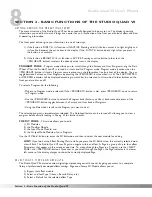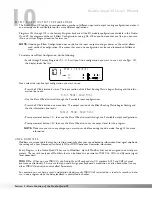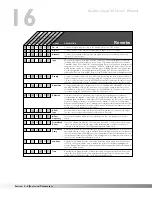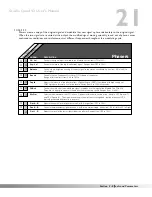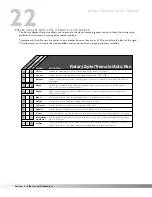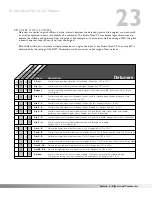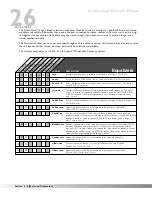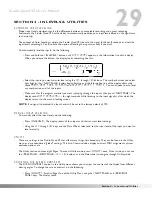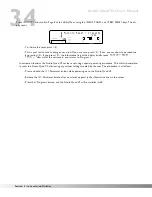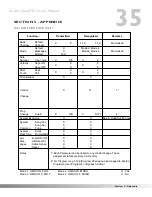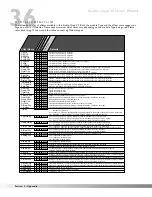
21
PHASERS
Phasers create a copy of the original signal and modulate that new signal’s phase relationship to the original signal.
When the two signals are reunited at the output, the modified signal, moving smoothly in and out of phase, causes
continuous cancellations and reinforcements at different frequencies throughout the modulating cycle.
✓
✓
✓
✓
✓
✓
✓
✓
✓
✓
✓
✓
✓
✓
✓
✓
Stereo Phase
Dual Phase
FX: Lvl
Controls the signal input level fed to the Module. Varies from OFF to 100%.
Dry: Lvl
Controls the level of the dry (uneffected) signal. Ranges from OFF to 100%.
Balance
Controls the left/right positioning of the dry signal in the stereo soundfield. Varies from -99 (all left) to
99 (all right).
Speed
Controls the Low Frequency Oscillator (LFO) speed of the phaser.
Range of this control is from 0.06 to 16 Hz.
Depth
Adjusts the intensity of the phaser effect. High settings of DEPTH combined with high settings of
FDBCK produce dramatic, synth-like results. Varies from 0 to 100 milliseconds.
FdBck
Controls how much of the modulated signal is fed back to the input of the Module. The FDBACK
Parameter is what gives phasers their distinctive resonating sound. Ranges from 0 to 99%.
WvFrm
Selects which waveform the LFO follows. Options for this control include sine, triangle, SP1 (Special 1),
and SP2 (Special 2). The sine wave setting is the most easily recognized, but the intensity of SP2
typically produce better results in phasers.
Out A - B
Adjusts the overall level of phaser voice A or B. Ranges from OFF to 100%.
Pan A - B
Controls the placement of phaser voice A or B in the stereo image. Varies from -99 (all left) to 99 (all right).
PARAM.
DESCRIPTION
Phasers
✓
Out L - R
Adjusts the level of the left or right side of the phaser. Ranges from OFF to 100%.
Section 3 - Effects and Parameters
Studio Quad V2 User's Manual


